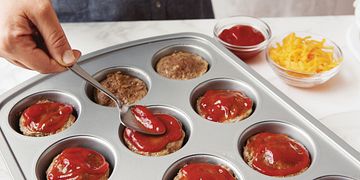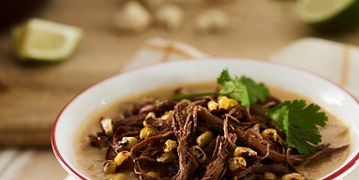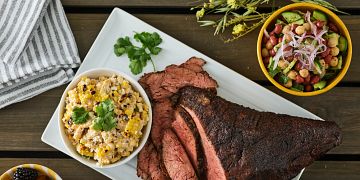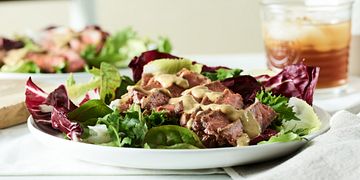基本知識

準備煙燻
無論您使用的是經典煙燻爐、kamado(陶瓷,通常為蛋形)烤架、傳統水壺烤架還是電動煙燻爐,您仍然會應用相同的基本元素:間接加熱、木煙和時間。遵循適合您的煙熏爐類型的指導原則,如果煙熏爐的熱源位於肉的正下方,請使用滴油盤以防止火焰爆發並避免產生過多的煙霧,從而導致苦味。始終在開放、通風良好的空間內工作。

你做什麼木材?
對於煙熏來說,木材本身是任何食譜中必不可少的一部分。不同的硬木會產生不同的效果,從牧豆樹的濃鬱煙燻味到蘋果木的溫和甜味,再到山核桃木的多功能性。一些愛好者說,在熏制之前必須浸泡硬木,這樣它們才能燃燒更長時間,而另一些人則認為浸泡過的木材不會產生足夠乾淨的煙霧。同樣,木材可以以原木、木塊、木片或木粒的形式進行燻製。遵循食譜的指導,但可以隨意嘗試。

帶來熱量
就像煙燻爐和硬木有很多選擇一樣,熱源也是一個重要因素。認真的燒烤愛好者堅信塊狀木炭是最好的燒烤工具,因為塊狀木炭只含有燒焦的木材,燃燒溫度更高、時間更長,並且會產生美味的煙霧。煤球也是常用的,並且在採用類似於長燃引信的“蛇形”方法時特別有效。使用電動煙燻器時,其他熱源包括丙烷氣體和簡單的開關翻轉。

擦掉
雖然大部分味道來自煙燻和牛肉,但調味料可以與木材的天然味道完美融合。擦料可以是濕的或乾的、辣的或甜的、濃的或淡的,或只是基本的鹽和胡椒。無論您選擇哪種方式,請記住它被稱為擦劑是有原因的:不要害怕親手操作並將擦劑塗抹到肉的表面以獲得最佳風味(並防止其脫落)。可以在開始煙燻之前或煙燻前幾小時塗抹擦劑,然後冷藏,直到開始煙燻為止。

低且(真正)慢
雖然可以在一小時或更短的時間內獲得美味的煙熏味,但較大且不太嫩的肉塊通常需要熏制長達 12 小時或更長時間。具體時間和溫度取決於切割和預期結果,因此請參考您的食譜。
需要一種新方法來烹飪牛腩嗎?燒烤大師拉希德·菲利普斯 (Rasheed Philips) 為您講解德州拐杖 (Texas Crutch) 的好處。
煙燻木材種類
木材類型 | 風味特徵 |
|---|---|
| 山核桃 | 為牛肉提供香甜、美味和濃鬱的味道。由於其濃鬱的味道,它是最受歡迎的木材之一。 |
| 牧豆樹 | 會產生濃鬱的煙熏味,非常適合在較短的時間內烹飪較小的肉塊。 |
| 橡木 | 用於熏制的較常見的木材之一。具有微妙的味道,非常適合烹飪大塊肉,因為它不會太濃。 |
| 蘋果 | 將提供更甜的口感和溫和的果味。非常適合與其他木材類型混合或單獨使用。 |
| 胡桃 | 為牛肉提供濃鬱、甜美、堅果的味道。非常適合混合,因為它可能會更甜。 |
| 櫻桃 | 為牛肉增添一絲果香,可單獨使用或與其他木材混合使用。 |
| 楓 | 會使肉具有甜美、清淡和溫和的煙熏味道。非常適合與其他木材混合或單獨使用。 |



























